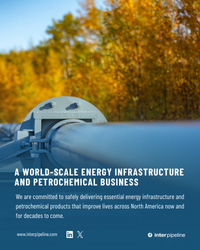There was a time many moons ago when vast quantities of natural gas from offshore Louisiana production flowed through scores of gas processing plants along the coast, then moved north and east in pipelines destined for the Northeast and Midwest. Those flow patterns have since been turned on their head, with offshore production steadily declining and the need for gas supplies for LNG exports along the coast ramping up, driving gas southward to meet that demand. That southbound gas includes Haynesville production — now back in growth mode — and a deluge of inflows from the Marcellus/Utica on reversed pipelines and new pipes. Supply in northern Louisiana will continue rising, while demand in southern Louisiana will do the same. With Henry Hub at the epicenter of this transformation, the consequences not only for Louisiana but for the entire natural gas market will be far-reaching. Today, we begin a series to examine how Louisiana natural gas flowed historically, the shifts that have already happened, the impact of more changes just ahead, and what it all means for the future of natural gas in Bayou Country.
We’ve been talking a lot about the pieces of this puzzle for the past few months in the RBN blogosphere. Fill Me Up Buttercup covered pipeline projects bringing more gas to the Gulf Coast via routes through Ohio and the Atlantic Coast. In Back With a Vengeance, we examined the who, what, where and how of Haynesville’s natural gas production resurgence. The link between soaring Marcellus/Utica production and LNG exports was the subject of Toe Bone Connected to the Foot Bone, and we covered the critical role LNG exports will play in balancing the U.S. gas market in I'm Movin' Out. In the past couple of weeks, we turned RBN’s analytical microscope on the Henry Hub, in Roll With Me Henry, where we assessed how flow patterns are already shifting around the most important trading hub in North America. But there is far more to this story than these individual market developments suggest. When you put them all together and do a rigorous analysis of Louisiana natural gas pipeline flows and capacity constraints, you reveal a picture of dramatic change, one that effectively turns Louisiana upside-down in terms of gas supply and demand. Which, of course, will have repercussions on prices, transportation values and basis.
Louisiana has the most dense, tangled network of natural gas pipes in the U.S., so to make sense out of these developments we need to dissect the state in terms of gas flows and capacity utilization. The only practical way to do that is to carve Louisiana into pipeline corridors that can be used to assess changes in inflows, outflows and intrastate flows through groups of pipes that serve similar markets from comparable supply sources. Through a careful examination of flows and capacity utilization across these corridors, it is possible to model why the market has developed as it has. Then, by overlaying new pipeline and LNG export projects on the model, you can get a good understanding of how flows and prices are likely to play out in the future.
Join Backstage Pass to Read Full Article









